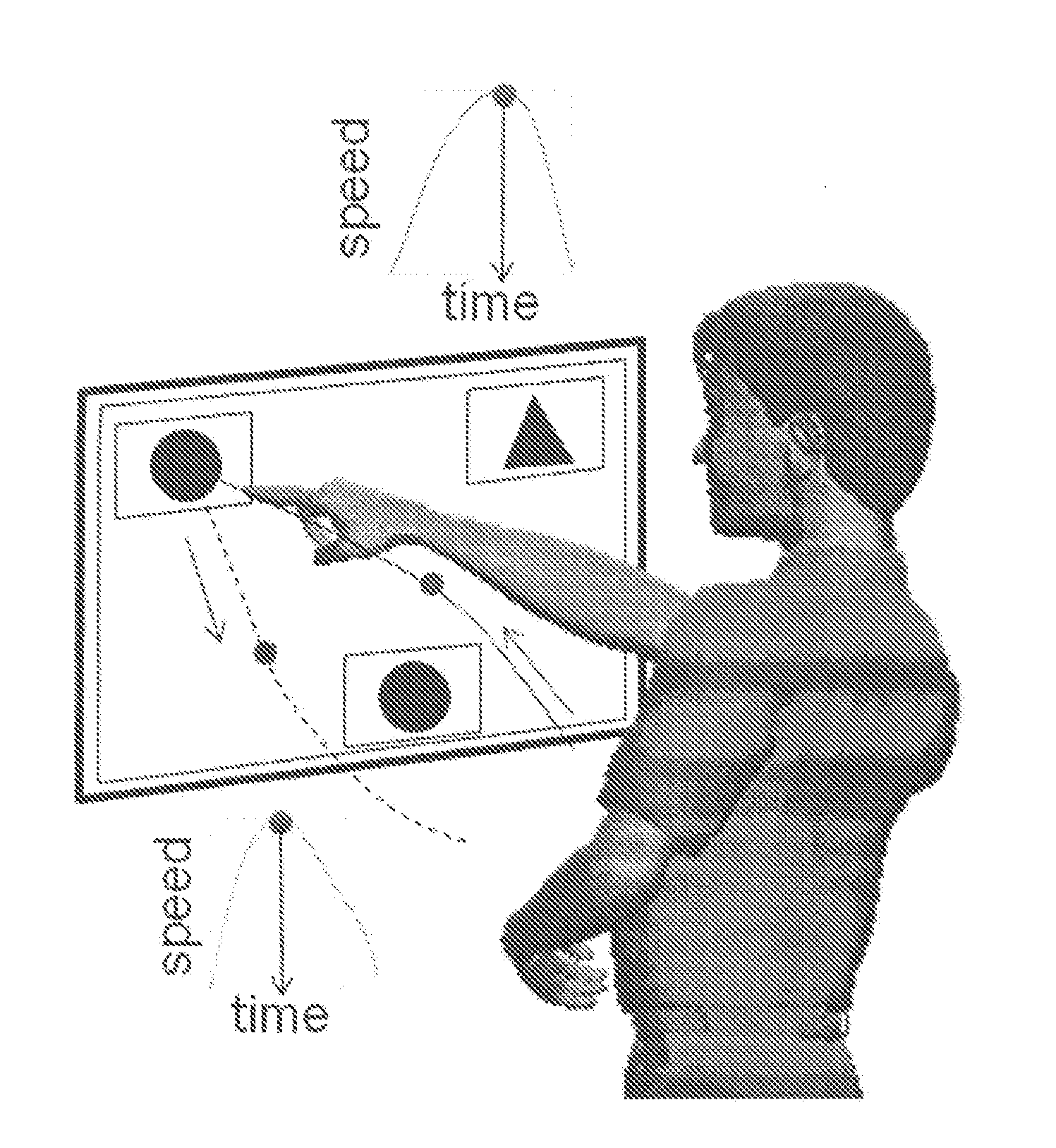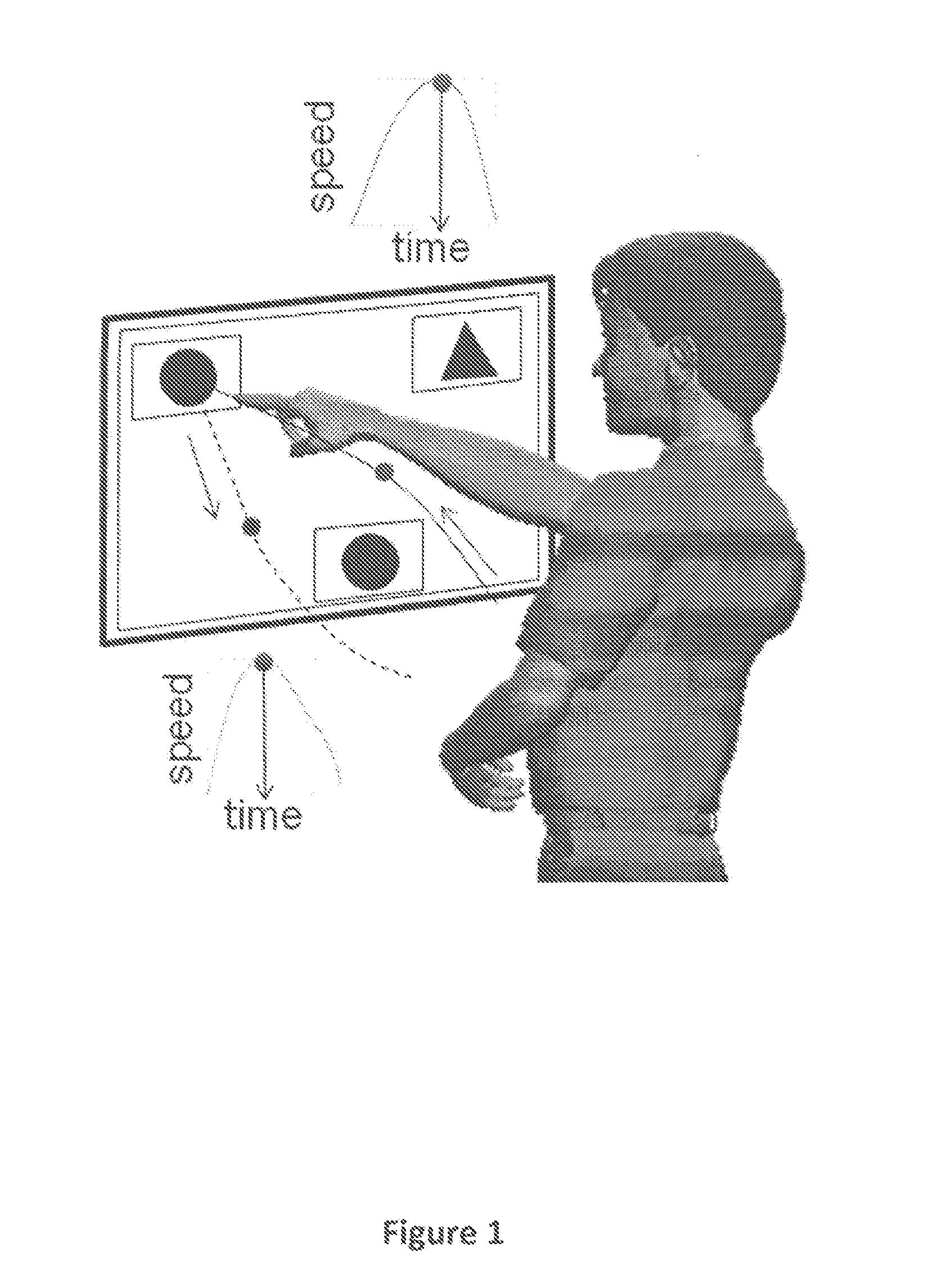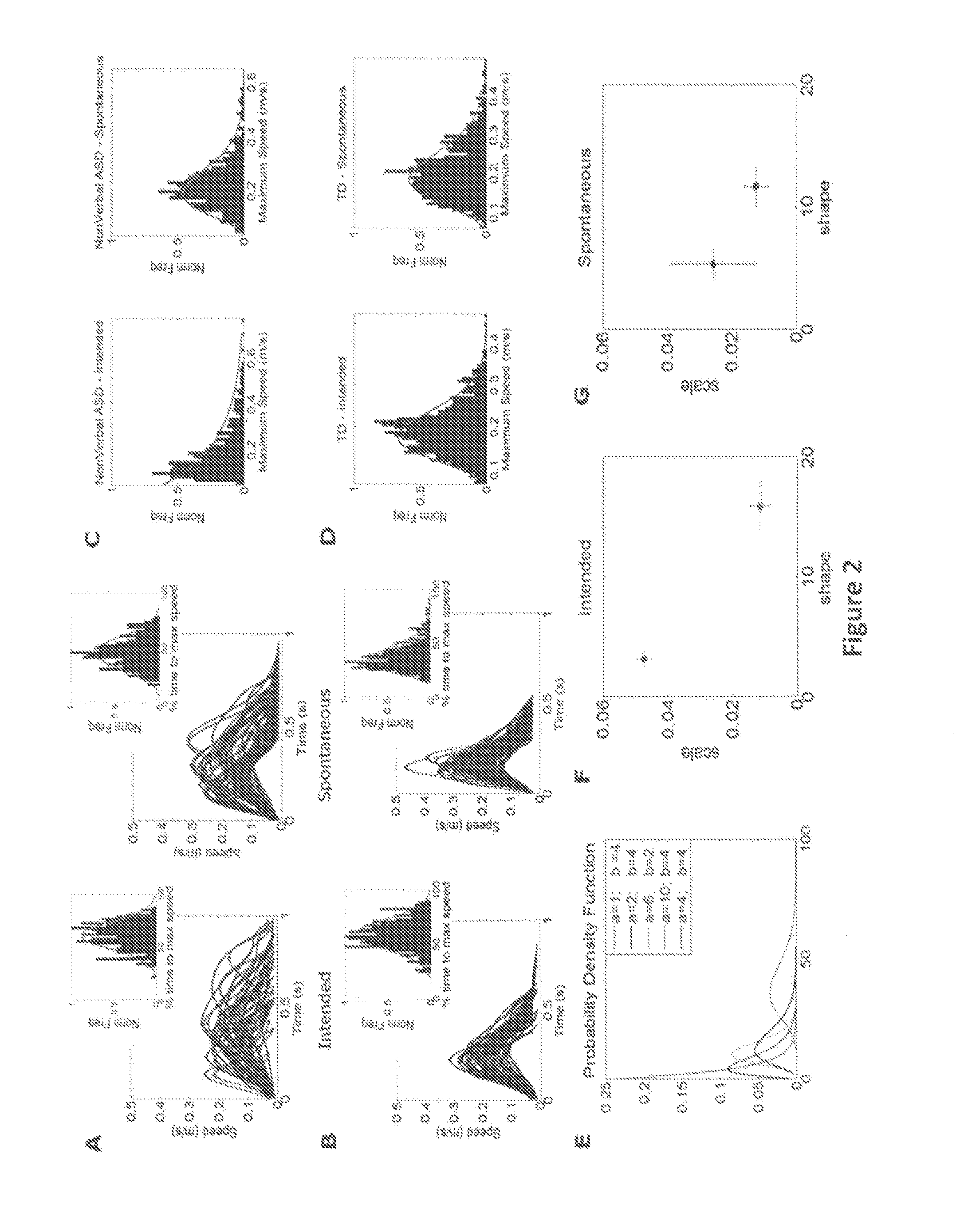Methods for the Diagnosis and Treatment of Neurological Disorders
a neurological disorder and treatment method technology, applied in the field of autism spectrum disorders, can solve the problems of ineffective treatment methods that address these two objectives, and achieve the effect of lessening the improper motion pattern of a subj
- Summary
- Abstract
- Description
- Claims
- Application Information
AI Technical Summary
Benefits of technology
Problems solved by technology
Method used
Image
Examples
example 1
[0085]FIG. 1 shows an example of a setup to harness motion trajectories. These motions usually take on the order of 1 second. Typically, only 10-15 minutes are needed to record hundreds of trials and build two frequency distributions, one from the deliberate movements (aimed at the target) and one from the spontaneous transitions (retracting away from the target with no specific aim). The random fluctuations of the maximum speed value are measured along with the random fluctuations of the time to reach the maximum speed value. Sample histograms with fitting distributions are shown in FIG. 2. The spontaneous movements carry the largest amount of cognitive information for children with ASD. For each child, their learning evolution described by their Gamma (a,b) plane trajectories can be tracked as a function of cognitive challenges (FIG. 3). Each one of these cognitive-dependent trajectories (FIGS. 3E-F) can be used to assess the individual cognitive improvements of each child with AS...
example 2
[0087]It has been discovered that the distinct statistical signatures of variability (exponential ASD vs. log-normal TD in FIG. 4) and the differential effects that changes in dynamics normally exerted on intentional vs. automatic movements facilitated the accurate prediction of not only the type of action but also the mode of control under which a blindly and randomly chosen hand movement trajectory came from (FIG. 5). This finding has enabled the use of the variability inherently present in natural movements to objectively and reliably diagnose the presence of autism across children of different age groups (FIG. 6). While the variability of intended movements clusters children with ASD far apart from their TD peers, the variability of their spontaneous automatic motions serves to classify each child within a continuum spectrum of disorders according to their sensory preferences as they reshape their movement patterns during motor learning. In the instant paradigm, the “leakage” of...
example 3
[0088]Children interacted with a real-time video of themselves which were projected on the screen between blocks. The task was then adapted to have the children trigger the video images on the screen using real-time biofeedback from their own movements. The output of the sensor attached to their moving hand served as the trigger for the reward (their face's and upper body real time video) in closed loop. This was achieved by creating a virtual region of interest in physical space invisible to the children. The children had to discover this region without instruction in order to trigger the video.
[0089]The TD children within two or three sessions lasting a few minutes (up to 15 min) each transitioned from random exploratory movements to more systematic patterns that soon acquired structure. Eventually the TD children intentionally moved the hand in and out of the RoI or sustained the hand inside of the RoI to trigger and / or to sustain their own real-time video showing their faces and...
PUM
 Login to View More
Login to View More Abstract
Description
Claims
Application Information
 Login to View More
Login to View More - R&D
- Intellectual Property
- Life Sciences
- Materials
- Tech Scout
- Unparalleled Data Quality
- Higher Quality Content
- 60% Fewer Hallucinations
Browse by: Latest US Patents, China's latest patents, Technical Efficacy Thesaurus, Application Domain, Technology Topic, Popular Technical Reports.
© 2025 PatSnap. All rights reserved.Legal|Privacy policy|Modern Slavery Act Transparency Statement|Sitemap|About US| Contact US: help@patsnap.com



